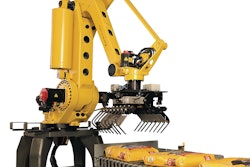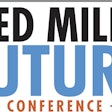
Immersive learning experiences simulate real-life scenarios, enabling learners to interact and engage more deeply in training, and safely gain and practice skills. Automakers, airlines and the military already use augmented reality (AR) for technician training and workforce development.
Using simulator technologies for teaching purposes in the feed manufacturing industry has the potential to positively impact professional development of the future workforce.
3 benefits of immersive learning
- Realistic training environment: Immersive learning creates an authentic training environment where workers can learn skills in a safe, controlled setting. By simulating real-life scenarios, such as operating complex machinery or handling hazardous materials, trainees can gain hands-on experience without the associated risks and costs of on-the-job training. This approach allows workers to familiarize themselves with potential challenges while increasing their competence and confidence in their roles.
- Interactive problem-solving: Immersive learning experiences enhance critical thinking, decision-making abilities, adaptability and problem-solving skills. By interacting with virtual environments, equipment and tools, individuals can make decisions and experience the consequences of their actions. Through realistic scenarios, they identify and address challenges, troubleshoot issues, and apply their knowledge in a dynamic, interactive format.
- Enhanced retention and transfer of knowledge: Studies have shown that workers are more likely to retain the information and skills acquired during immersive training and effectively transfer them to real-world situations on the job. The multisensory nature of immersive experiences, including visual, auditory, and tactile feedback, reinforces learning and makes it more memorable.
While immersive learning applications don't exist for feed producers, here are some developing applications in other areas of agriculture.
Virtual reality training
In order to maximize the benefits of immersive learning for agriculture, scholars at Iowa State University, University of Illinois at Urbana-Champaign, and Penn State encourage educators to engage in professional development opportunities to increase exposure to virtual reality (VR) technology and generate ideas for applications in their programs. They can also consider pursuing grant funds from educational foundations and community organizations to acquire VR technology.
One study, conducted by the University of Illinois, is developing VR simulation materials for an immersive learning experience with a $500,000 U.S. Department of Agriculture (USDA) National Institute of Food and Agriculture (NIFA) project grant.
Salah Issa, assistant professor, Department of Agricultural and Biological Engineering at U of I, said the goal of the project is to enhance the agricultural equipment safety course in its advanced applicator technician associate degree program at Parkland College. The grant was used for the development of learning modules for semi-tractor-trailer truck safety.
The modules provide an interactive learning environment for students to adapt the material to their individual knowledge and skill set. Students wearing portable VR headsets can take the time needed to explore the trucks on their own, Issa said.
Augmented, mixed reality training for vets
Exploring other educational technologies beyond VR, such as augmented reality and mixed reality (MR), could expand the potential for improving the health of animals, as well.
A shortage of large-animal veterinarians in Pennsylvania prompted Penn State to investigate the application of augmented reality to allow practitioners to diagnose animal problems remotely. According to Jim Ladlee, Penn State Extension state program leader for emerging technology, remote veterinary services allows veterinarians to see more animals, spend less time in transit and can create healthier environments for animals’ well-being.
Daniel Dotterer, a Pennsylvania sheep farmer, said remote visits through the program can drastically decrease costs for producers, saving hundreds of dollars per vet visit.
Immersive learning experiences have the potential to transform training in the feed industry by providing workers with realistic training environments, fostering interactive problem-solving skills, and enhancing knowledge retention and transfer. Although further research, and addressing barriers to adoption, are critical to reaching the full potential of VR and other immersive learning techniques, the benefits could contribute to a well-trained workforce capable of handling the challenges of the future feed industry.


















